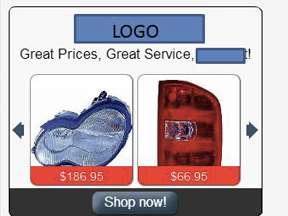Google’s Dynamic Search Ads allow pay-per-click advertisers to show text ads based on relevant queries that are not otherwise in an ad campaign. It’s been nearly two years since Google first introduced Dynamic Search Ads, yet this feature is often used incorrectly by advertisers. Managed properly, Dynamic Search Ads can help advertisers grow their traffic and revenue.
Dynamic Search Ads Defined
Using the same web crawling technology as organic search, Google combs your site to determine if a particular page is relevant to the query. If Google deems the query relevant, it will show an ad with a dynamically generated headline going to the applicable page. You simply write description lines one and two, and the display URL for the dynamic search ad.
With DSAs, you must also set up dynamic ad targets. These are similar to Product Listing Ad (PLA) auto targets, only instead of going after specific feed attributes, you are segmenting by web pages. Your targets are URLs, page titles, and page content that contain specific phrases. Google will sometimes automatically populate categories that you can target. As with PLAs, you can also target all web pages — which is a good first step.
Let’s look at a hypothetical campaign targeting various Nike running shoes. The campaign structure looks like this.

Sample campaign structure.
These four lines of products are covered, but what happens when a new model, the Nike Air Berwuda, is added to the site? Since the keyword “Nike Air Berwuda” is not yet in the campaign, a DSA can potentially appear. Here is our DSA template.

Dynamic search ad template.
Thus, a search for “Nike Air Berwuda” would trigger an ad with this headline going to the specific landing page:

Dynamic search ad with product headline.
The body copy of the ad is generic and does not include the targeted keyword, but the headline is accurate and the ad will go to the correct page.
In theory, DSAs are a good way to capture relevant traffic you may not have otherwise captured. However, my experience has taught me important lessons about running successful DSA campaigns.
Use Negative Keywords Liberally
Reviewing the search query report for irrelevant searches is more important than ever in DSA campaigns. Just like a regular PPC campaign, you’ll want to consistently be adding negative keywords based upon your search query report. Google tends to cast a wide net with the queries triggering your ads. For example, I work with a merchant that sells hockey-training equipment, but his DSAs were being triggered by queries such as “hockey tournament” and “hockey news magazine.” The client sells a product named “Tournament Style Goal,” thus Google was likely matching the query to this product.
You may also want to consider adding keywords from your most important campaigns as negatives in the DSA campaign. In the example above, I use DSAs as a way to capture traffic for products we haven’t yet built ad groups. But let’s say that we want absolute control over the Nike Running Shoes campaign. Whenever a new model is added to the site we immediately create a new ad group. Google claims that it will not show DSAs for active keywords already in your account. But we have seen otherwise. In this case, it makes sense to add all of the specific models and terms like “Nike running” as negatives to ensure that our correct ad displays.
Exclude URLs, Page Titles, and Content
Along with implementing negative keywords, you can also setup dynamic target exclusions. For example, say you don’t want to advertise hiking shoes because the margins are low. You can exclude any URLs, page titles, or page content that contains the term “hiking.”

Dynamic ad target exclusion.
Only Run DSAs in Well-planned Accounts
DSAs should never run in accounts that haven’t already been extensively built out. My definition of “extensively” is 75 percent. In other words, if you already have campaigns targeting 75 percent of the brands and themes on your site, then DSAs are a good option for incremental, profitable traffic. Managing DSAs under this threshold is too cumbersome and will yield poor results as too much irrelevant traffic will come to the site. Your time is better spent building highly relevant campaigns and then using DSAs to capture the additional traffic.
Set Low Bids for DSAs
All of the tactics described above will minimize irrelevant traffic, but they won’t completely eradicate it. The key is to set a low bid so you aren’t spending too much on this campaign. Your ad positions will be lower than the account average, but it shouldn’t be an issue since these queries encompass the 25 percent or less of your site that you haven’t created campaigns for.
In our best-performing DSA campaigns, the conversion rate is slightly lower than account average while cost per conversion is consistent with it. Additionally, we see a steady flow of conversions come in monthly. When we see converting keyword themes in our DSAs, we break them out into their own campaigns so they can get more exposure and, ultimately, conversions.
Conclusion
Dynamic Search Ads are not alternatives to extensive campaign builds. When you already have a well-built account, DSAs are designed to complement your paid search efforts. They also provide insights into further account growth.





